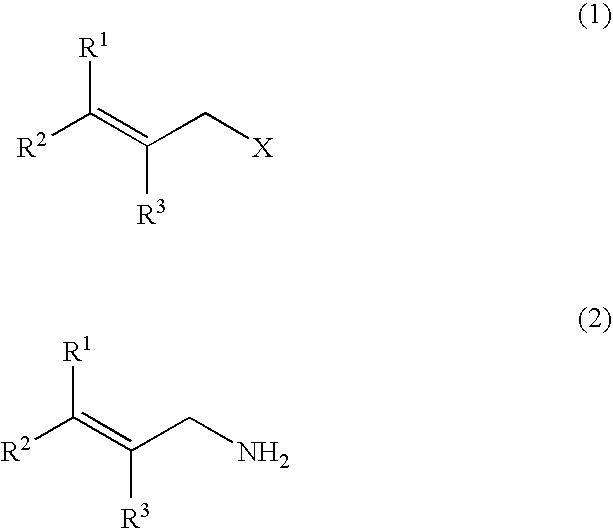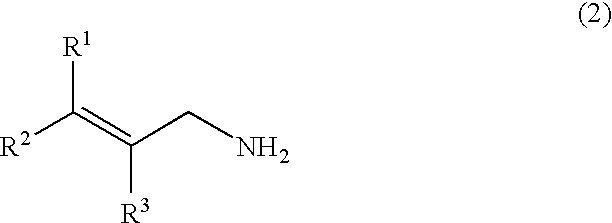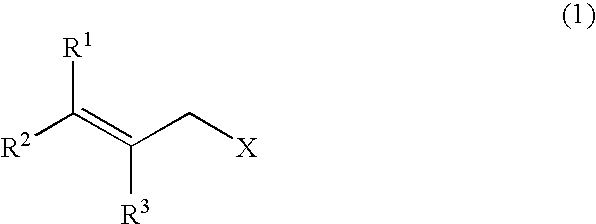Method for producing primary amine compound
- Summary
- Abstract
- Description
- Claims
- Application Information
AI Technical Summary
Benefits of technology
Problems solved by technology
Method used
Image
Examples
example 1
[0058]A stainless autoclave was charged with 3.91 parts by weight of allyl chloride (content: 98% by weight), 4.89 parts by weight of paraformaldehyde (content: 92% by weight) and 28.4 parts by weight of an aqueous 12 wt % ammonia / methanol solution, and the mixture was stirred at 40° C. for 3 hours, at 50° C. for 2 hours, and further at 70° C. for 1 hour to react them. To the reaction mixture were added 51.3 parts by weight of an aqueous 24 wt % hydroxylamine sulfate solution and 22.7 parts by weight of 35 wt % sulfuric acid to adjust the solution to pH 0.8, followed by stirring at 40° C. for 30 minutes. Then, 61.3 parts by weight of an aqueous 27 wt % sodium hydroxide solution was added to the solution to adjust the solution to pH 13. When the mixture obtained was analyzed, the yield of allylamine was 87.8%, the yield of diallylamine was 3.5%, and the yield of triallylamine was 1.2% (GC method, based on allyl chloride).
example 2
[0060]A stainless autoclave was charged with 8.70 parts by weight of cinnamyl chloride (content: 99% by weight), 5.59 parts by weight of paraformaldehyde (content: 92% by weight) and 35.22 parts by weight of a 12 wt % ammonia / methanol solution, and the mixture was stirred at 70° C. for 4 hours to react them. The reaction mixture was subjected to a post-treatment under similar conditions as those of Example 1. When the mixture thus obtained was analyzed, the yield of cinnamylamine was 72.8%, the yield of bis-(cinnamyl)amine was 18.9%, and the yield of tris-(cinnamyl)amine was 8.1% (LC method, based on cinnamyl chloride).
PUM
| Property | Measurement | Unit |
|---|---|---|
| Substance count | aaaaa | aaaaa |
| Substance count | aaaaa | aaaaa |
| Substance count | aaaaa | aaaaa |
Abstract
Description
Claims
Application Information
 Login to view more
Login to view more - R&D Engineer
- R&D Manager
- IP Professional
- Industry Leading Data Capabilities
- Powerful AI technology
- Patent DNA Extraction
Browse by: Latest US Patents, China's latest patents, Technical Efficacy Thesaurus, Application Domain, Technology Topic.
© 2024 PatSnap. All rights reserved.Legal|Privacy policy|Modern Slavery Act Transparency Statement|Sitemap



